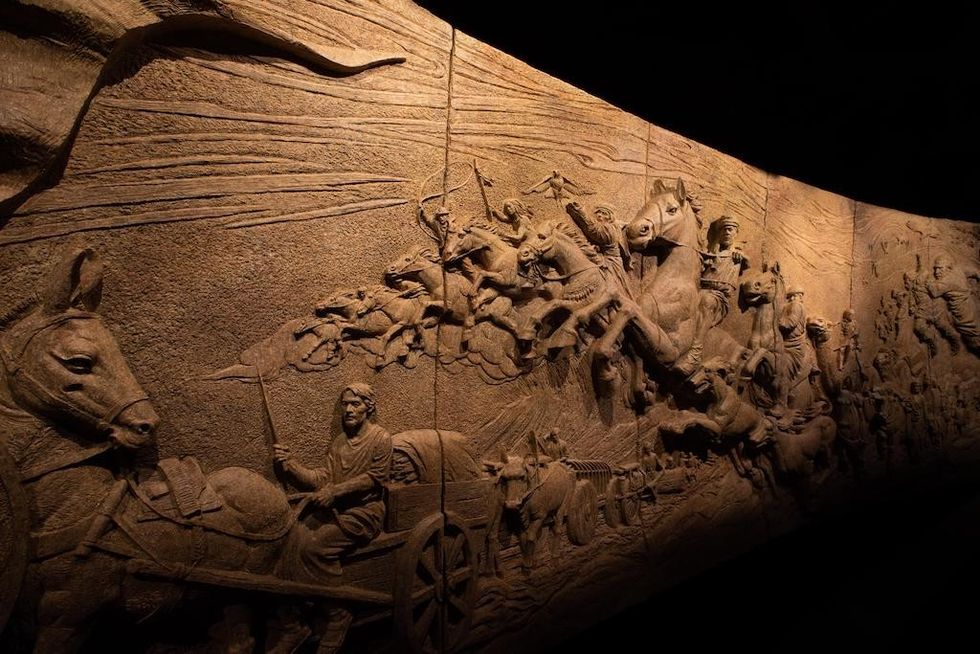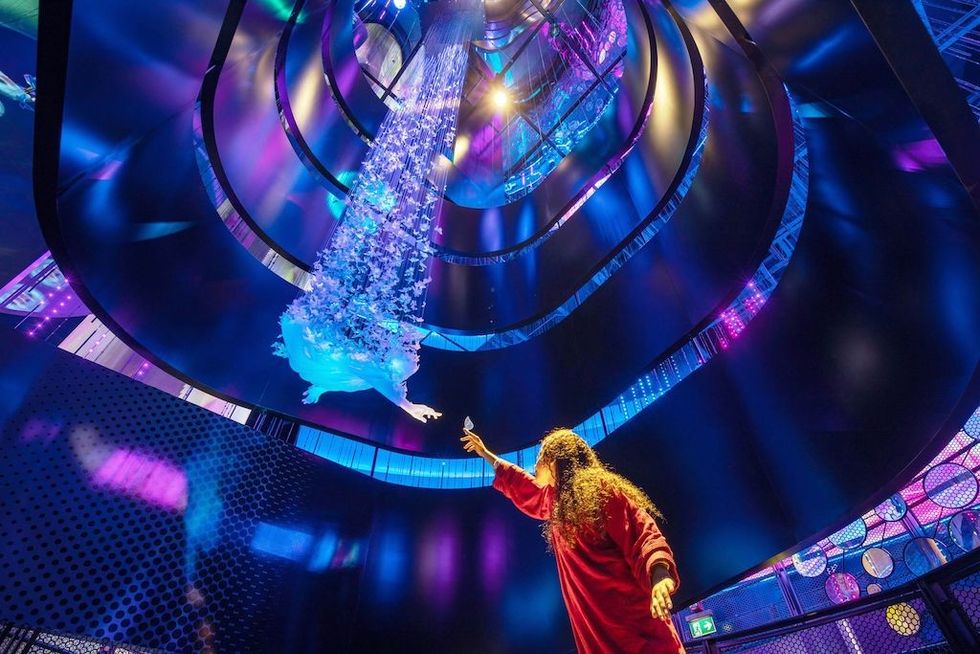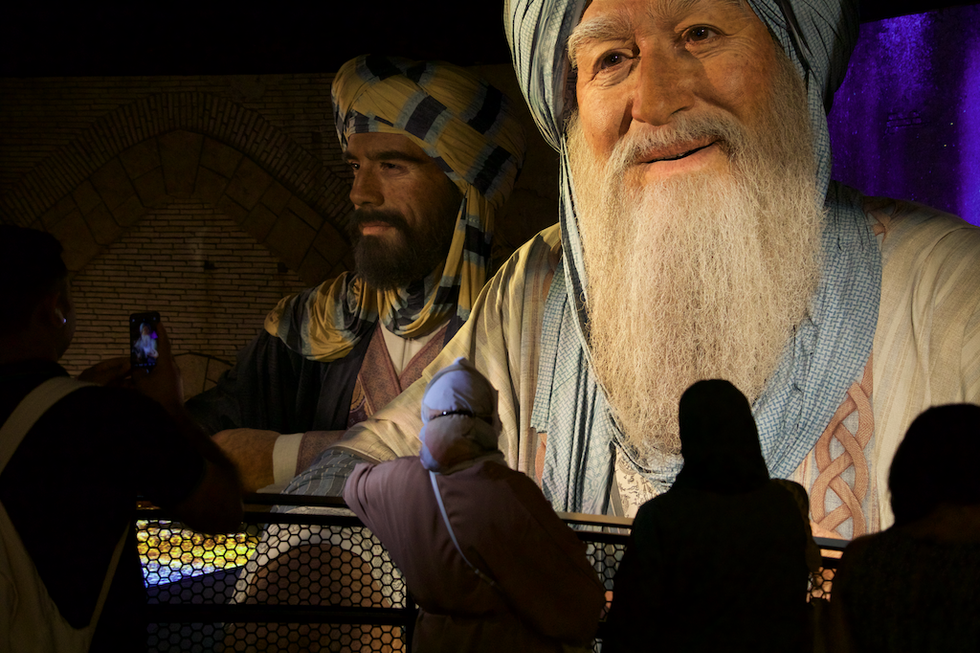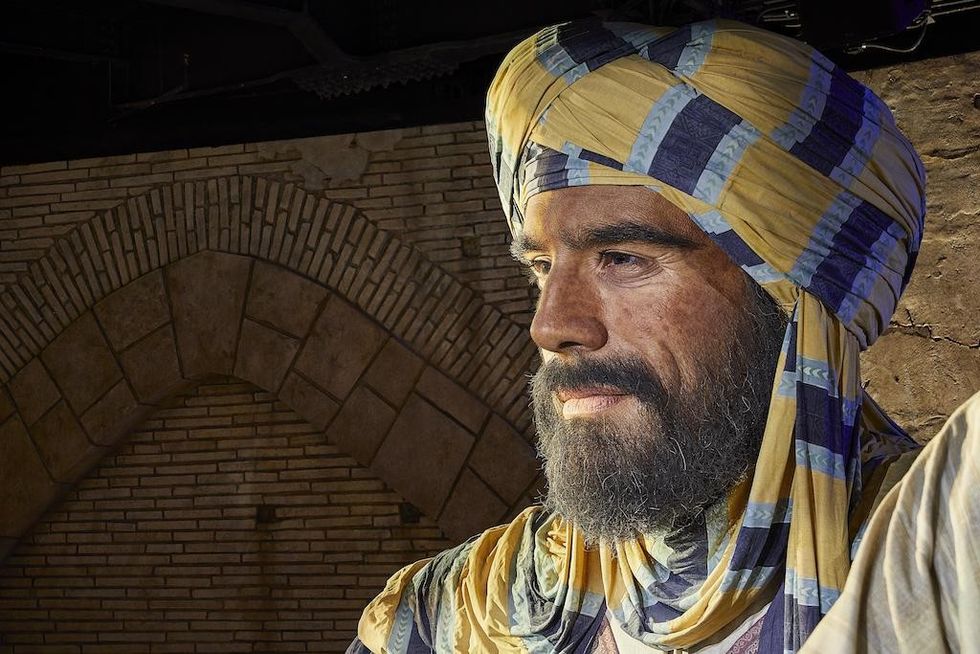The London Transport Museum, in Covent Garden, has re-opened after a £22million refurbishment and extension. Robert Simpson of Electrosonic, the principal a-v systems integrator for the project, explains the museum’s intelligent use of audio-visual and interactive techniques showcased in over 150 exhibits.
The London Transport Museum opened at its present location in 1980 in what was built as the Covent Garden Flower Market in 1871. In 2005 it closed for a two year programme of refurbishment and extension, during which the exhibition was completely re-ordered. Principal exhibit designer was Ralph Appelbaum Associates (London office), with Conran Design Group as designer of the entrance feature “World City Wall” ( see above and bottom right ).
The whole exhibition relies heavily on the use of audio-visual techniques to enhance and interpret the artefacts. Since its opening in 1980 the London Transport Museum has had an experienced in-house AV team, so the AV system design became a collaborative effort between the Museum and Electrosonic Ltd, the AV Systems Integrator.
The AV content comes from many different sources. New content for major exhibits was produced by ISO Design of Glasgow; but a significant proportion of the content was produced in house, either as new material, or drawing on archives, or using elements from the previous exhibition. Much use is made of audio to animate otherwise static or mute exhibits with specially commissioned sound tracks from Julian Scott and overall sound design by Martin Pilton.
The AV hardware installation follows current practice in taking a “hybrid” approach, intended to minimise the amount of cabling required. Most source hardware is rack mounted and installed in four small control rooms – however, a significant proportion is sited within the exhibits. The reliability and very small size of current video playout devices and single board computers, and the fact that it is now easy to control and update such items over networks, makes this arrangement practical. At the London Transport Museum a Medialon system is installed for overall control. This is also able to monitor system performance and allows for the quick recall of settings for special events.
World City Wall
The World City Wall compares transport in London with that in five other major cities, New York, Tokyo, Shanghai, Delhi and Paris. It shows how world cities are sustaining growth and vitality through innovative transport solutions. Multiple monitors show transport activity in each city, and here the interesting point is the way in which the footage was obtained.
While the image collage was edited and assembled by ISO Design, the raw images were provided by no less than 180 contributors who live in the featured cities. A request was put out on Facebook for people to record their city journeys, and the result is a lively and stimulating exhibit.
Another exhibit in the City Wall area is “Heartbeat”, described by its creators as “algorithmic art”. Here the daily traffic patterns of the cities are projected in dynamic graphic form, with the whole images being “pulsed” to the rhythm of the human heart.
Design for Travel
The Design for Travel Gallery is based on London Transport’s emphasis on good design. From the roundel logo and Harry Beck’s iconic underground map, to station architecture, vehicle design and pioneering transport advertising, the gallery shows how London Transport developed a visionary style which defines the identity of the city.
The gallery presents a selection of posters, original artwork and artefacts, but these are augmented by multiple projected images that seem to fill the space. Seven projectors are used, six projecting on the floor, and one onto a wall. The show explores several design themes, and is run from Dataton “Watchout”.
Touchscreens and Media Panels
The museum makes extensive use of simple AV elements that are designed to blend in with the overall exhibit design, and to be intuitive in use. 24 “VIPs” (Visitor Information Points) are sited throughout the museum, and these are based on a simple design embodying a touch screen and a compact built-in computer. The majority of the software for these was developed by the museum in-house.
Similarly there are a number of “media panels” which show relevant video programmes on a continuous basis. Most video is played from DVS “Blade” players. Computers are single board ITX in a housing designed by the Museum itself.
Connections
This is another exhibit where the Facebook technique was used to gather original footage. Millions of individual journeys are made across London at any one time. “Connections” communicates the scale and complexity of London’s vast transport infrastructure and the interrelationships between travel above and below ground. This display combines striking 3D design, 55, 000 model buildings, projection and transport data.
The thought-provoking exhibit is based on a four metre diameter three dimensional scale model of central London fabricated in white acrylic. The major roads are transparent to allow visitors to see through to the Underground system behind. Visitors can walk behind the relief model to see the geographic relationship of the Underground to the roads above and look through periscopes at the views from London landmarks. Images of individual journeys using all modes are projected onto a screen above the model.
Using graphic data projected on to the model in conjunction with the video projection screen, “Connections” shows how individual journeys make their way across and under London. By plotting these journeys on the model surface and showing time compressed video footage of journeys made on the screen above, the many routes, systems and interchanges that form London’s transport arteries are revealed. At the end of each programme the main screen and the scale model of London shows live, or pseudo live, data from Transport from London’s network control centre.
Simulators
Small boys of all ages want to drive trains, and the London Transport Museum gives them the chance. Three different simulations are offered – one of which is built in to a “real” train.
The simulations allow you to drive a train on three different underground lines, and the images (presented on large flat screen displays) are photo-realistic and correct in every detail.
A fascinating point about the simulations is that they are not, in fact, the ones used by London Transport, but ones generated by London Transport Underground Railway enthusiasts. Each line has its own fan club, and they vie with each other to produce the most accurate imagery.
Audio
Sound is used extensively to animate and interpret exhibits. Much of it is sourced from accompanying video, but “audio only” tracks are sourced from Electrosonic ESTA-4 solid state players. Many different loudspeaker types are used, including Panphonic “Sound Shower” directional electrostatic loudspeakers and Amina “Exciter” transducers fitted directly to glass panels.
Loudspeakers are installed in unexpected places. Two horses pulling a horse drawn omnibus have a chat (complete with animatronic mouths) and detailed scale models, for example of the “cut and cover” building of the first underground lines, can be viewed in detail through optical viewers which include built in loudspeakers.
About Electrosonic
Founded in the UK in 1964, Electrosonic is an international company with a long established history at the forefront of audio-visual, mixed media and video display engineering.
Electrosonic has always been among the first to apply new technology creating state-of-the-art solutions to meet the challenges of the professional audio visual and digital media markets. Today, Electrosonic combines design with high-quality product, engineering & integration, and full service suppoprt for corporate applications, control rooms, broadcast, advanced imaging, museums and exhibitions, digital signage, theme parks and visitor attractions.
Electrosonic has offices strategically placed to serve its main geographic markets and provide round the clock support. These include four offices in the US, plus offices in the UK. Middle East, mainland Europe and the Far East. While each office contains specialist resource, this can be deployed around the world as customer needs dictate. Offices are located in London, Dartford, Edinburgh (UK), Los Angeles, Minneapolis, New York, Orlando (USA), Dubai (UAE), Stockholm (Sweden), Helsinki (Finland) and Shanghai (China).
Themed Entertainment: Live Interaction with Electrosonic’s Chris Conte
Themed Attractions: Visitors are Immersed, Educated and Engaged at Air Force One Discovery Center
The Joyful Architect: Al Cross Talks about Themed Attraction Design

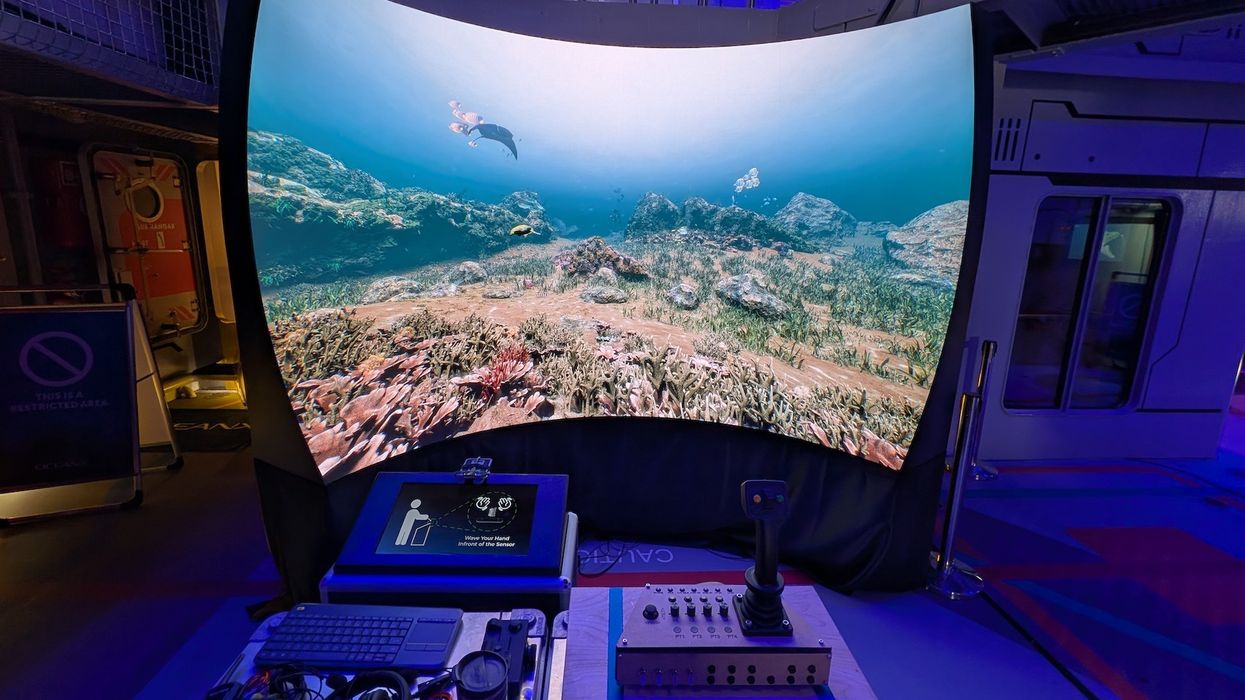
 TM Lim and Adam Wales
TM Lim and Adam Wales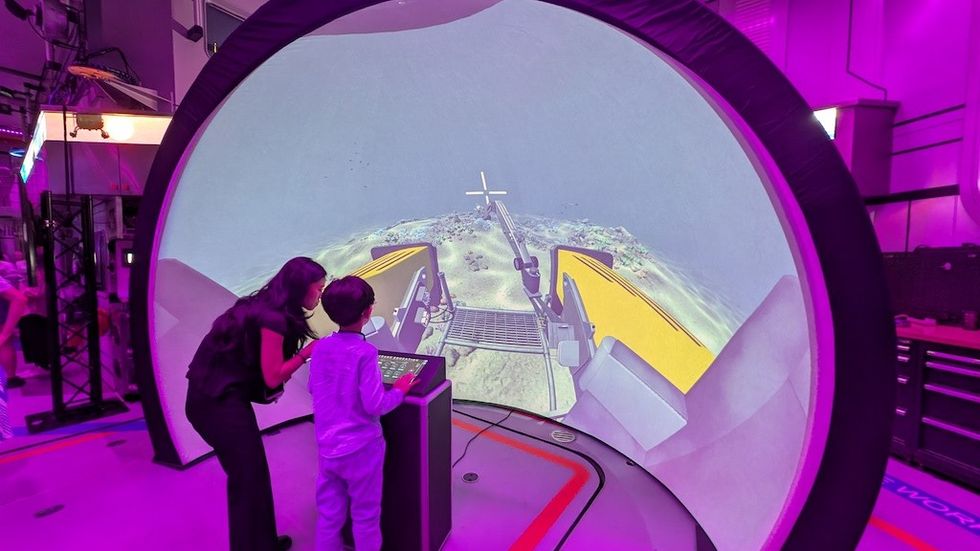
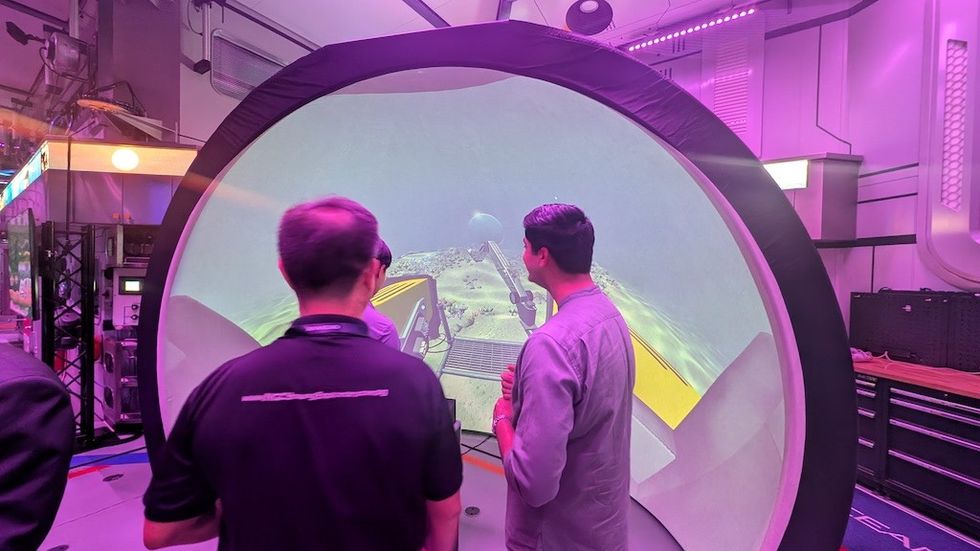
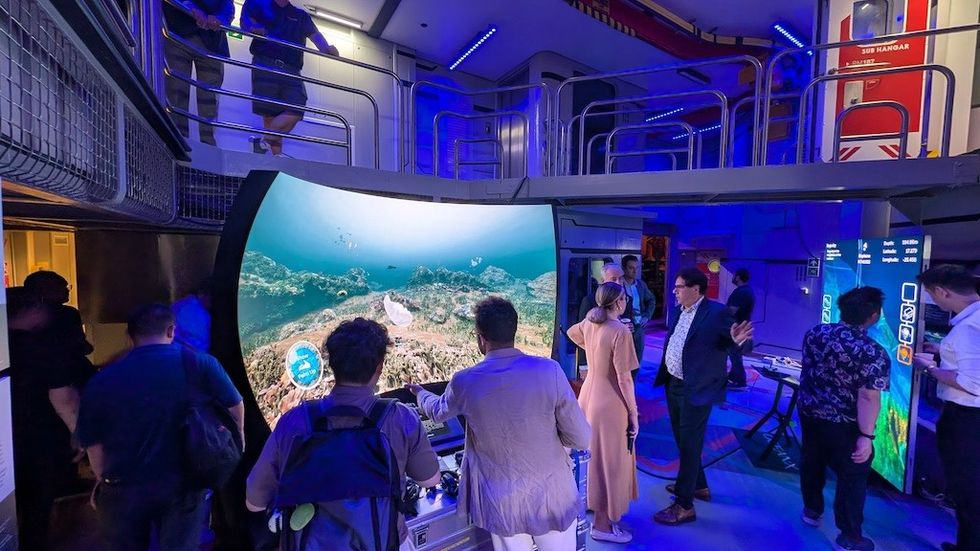
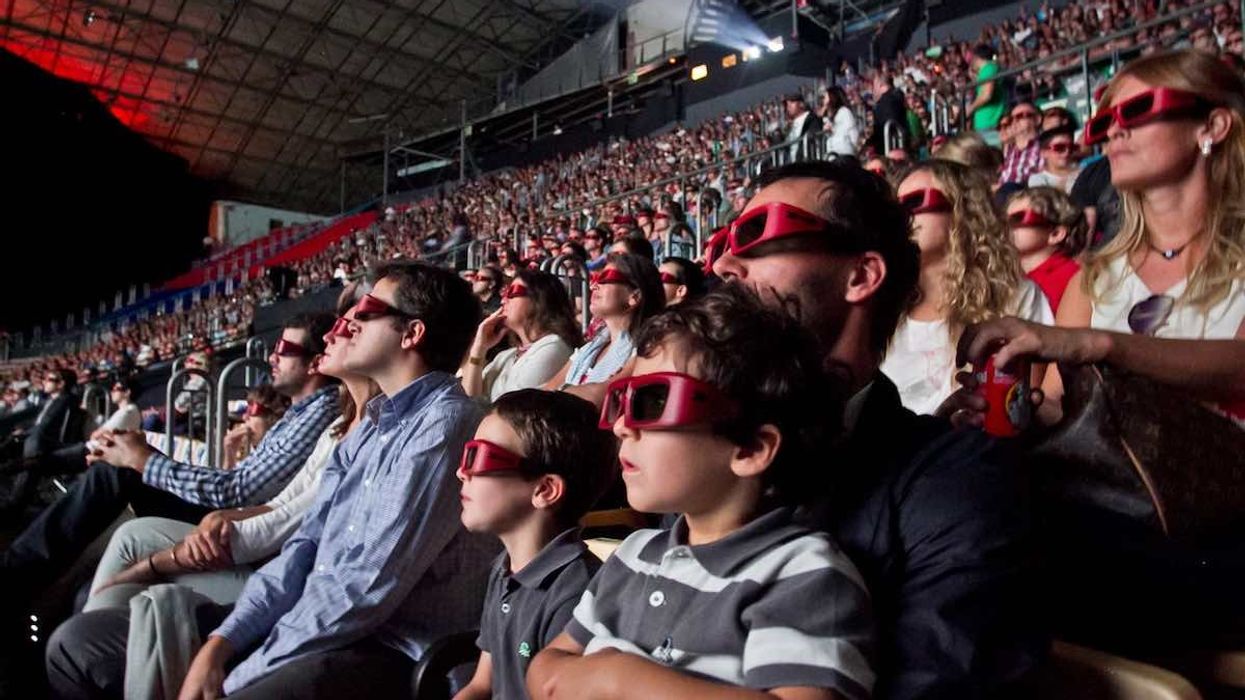



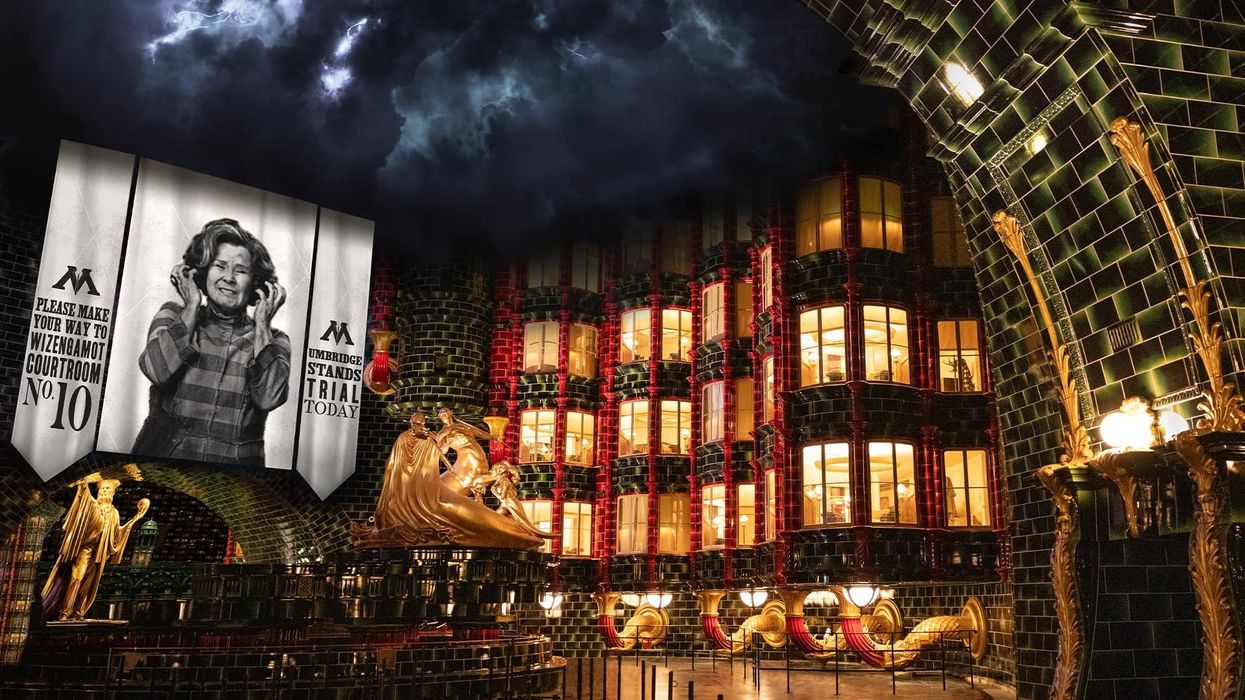
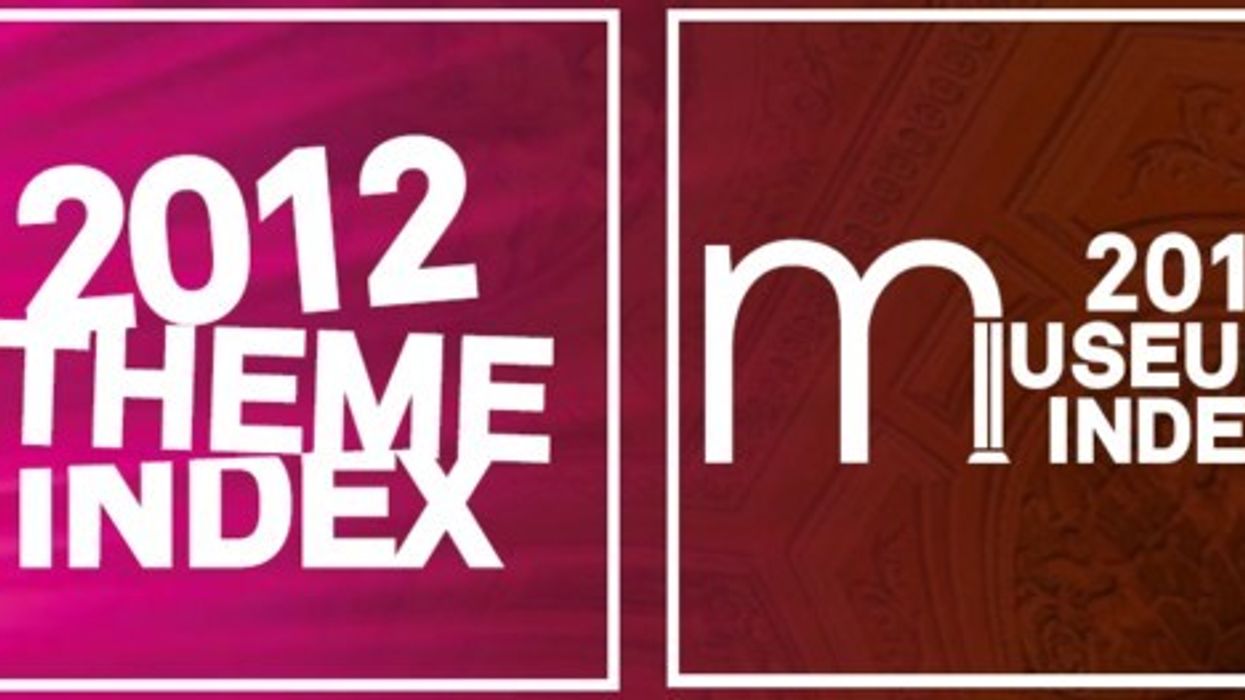

 Toby Harris
Toby Harris Hijingo
Hijingo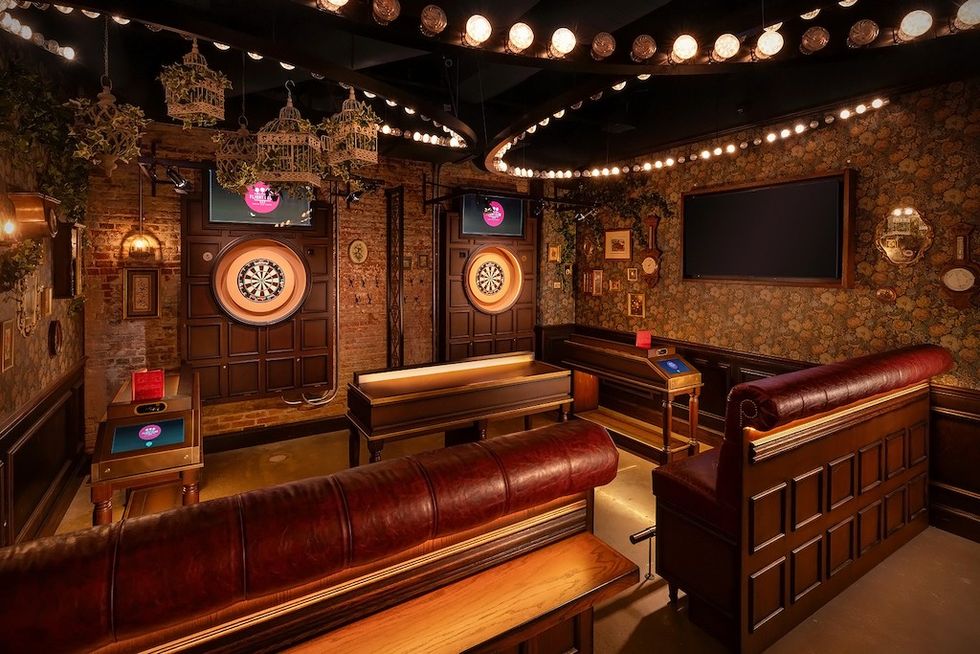 Flight Club, Washington D.C.
Flight Club, Washington D.C.
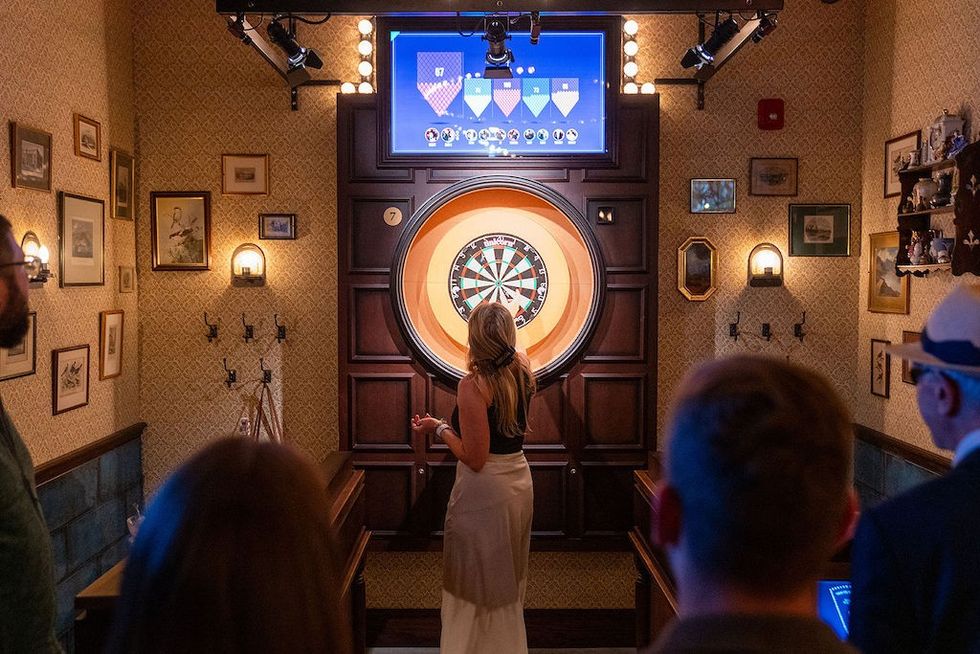 Flight Club Philadelphia
Flight Club Philadelphia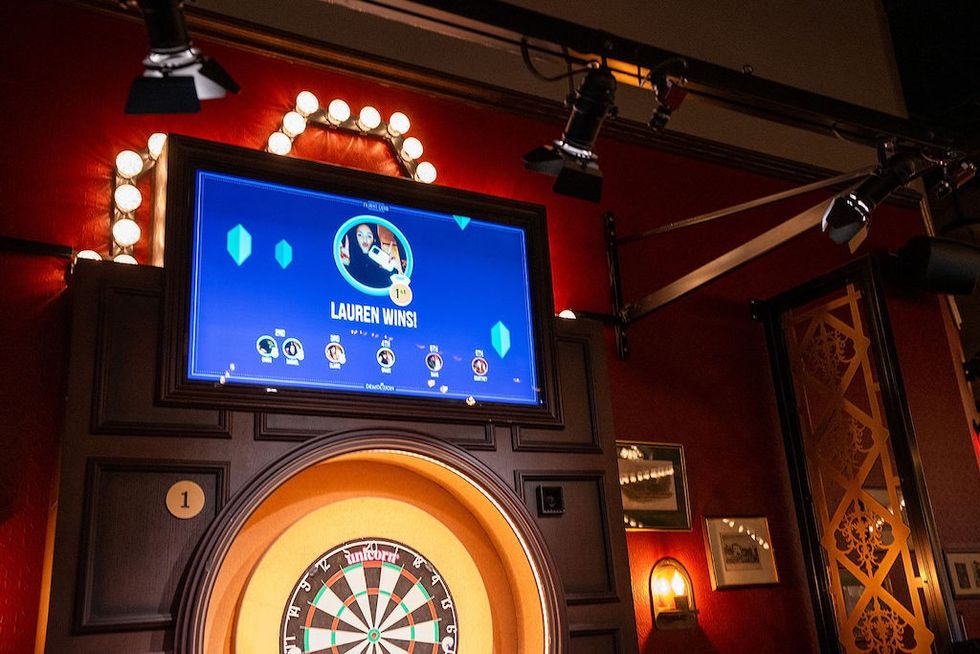 Flight Club Philadelphia
Flight Club Philadelphia Bounce
Bounce Hijingo
Hijingo Bounce
Bounce
 Fernando Eiroa
Fernando Eiroa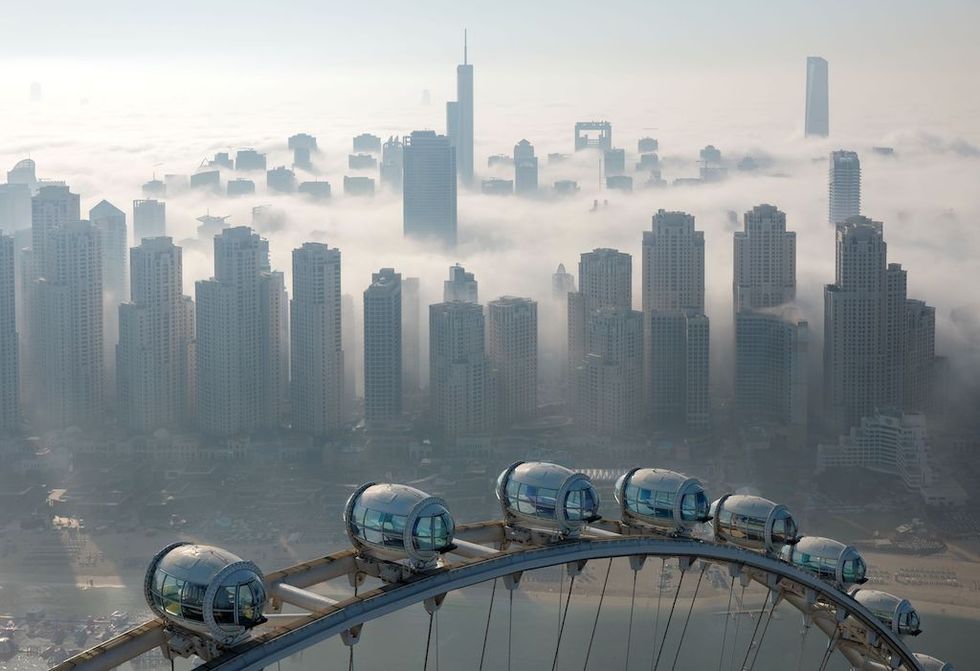
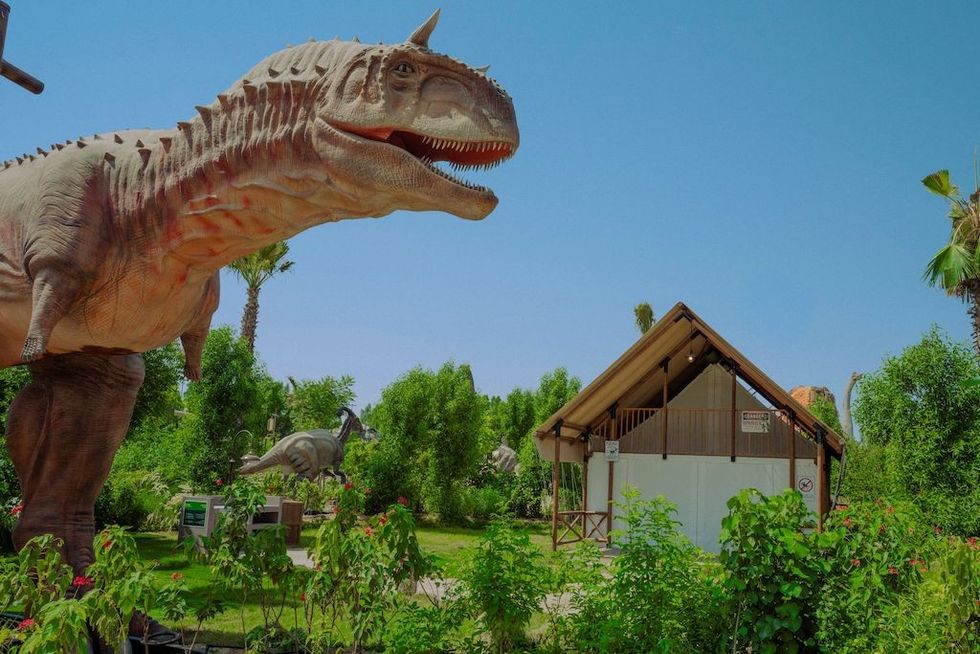

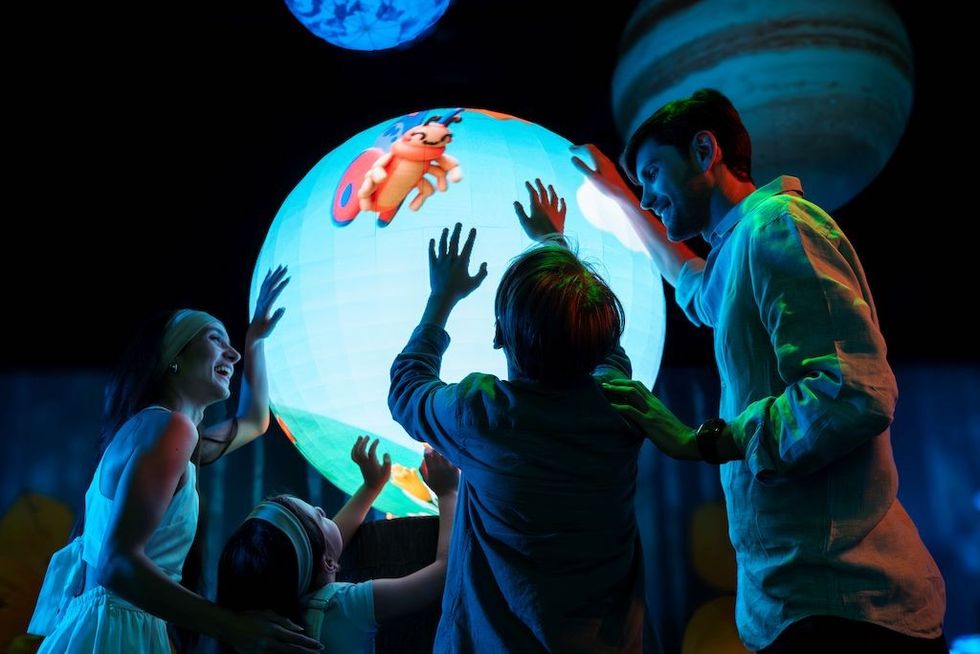



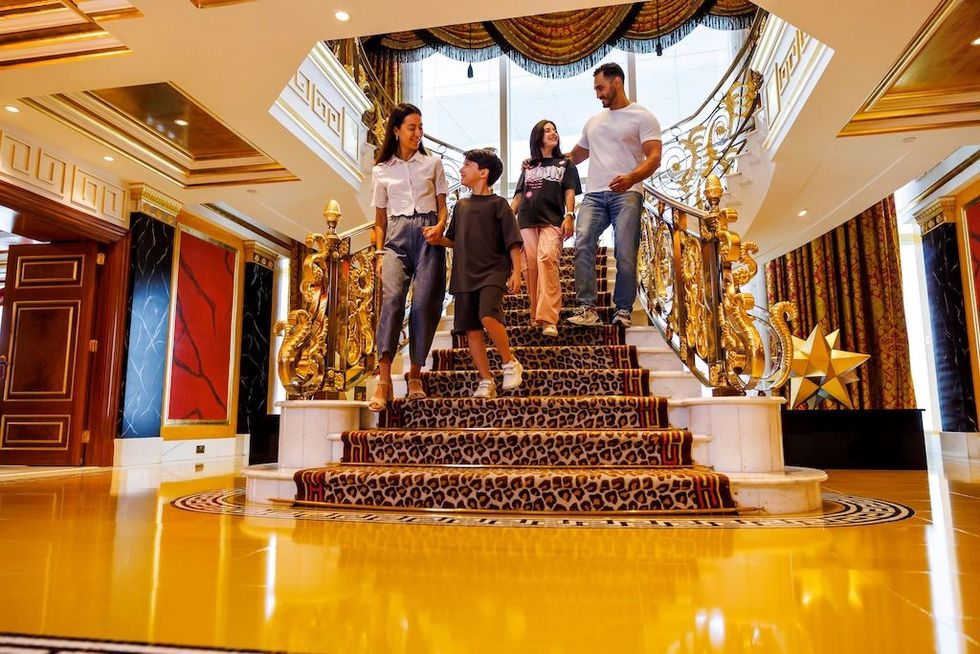



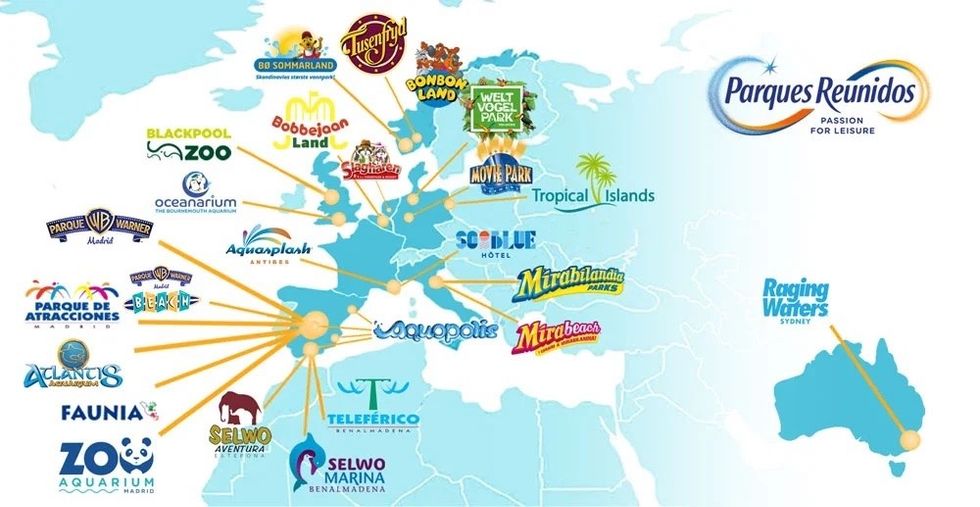
 Nickelodeon Land at Parque de Atracciones de Madrid
Nickelodeon Land at Parque de Atracciones de Madrid Raging Waters
Raging Waters 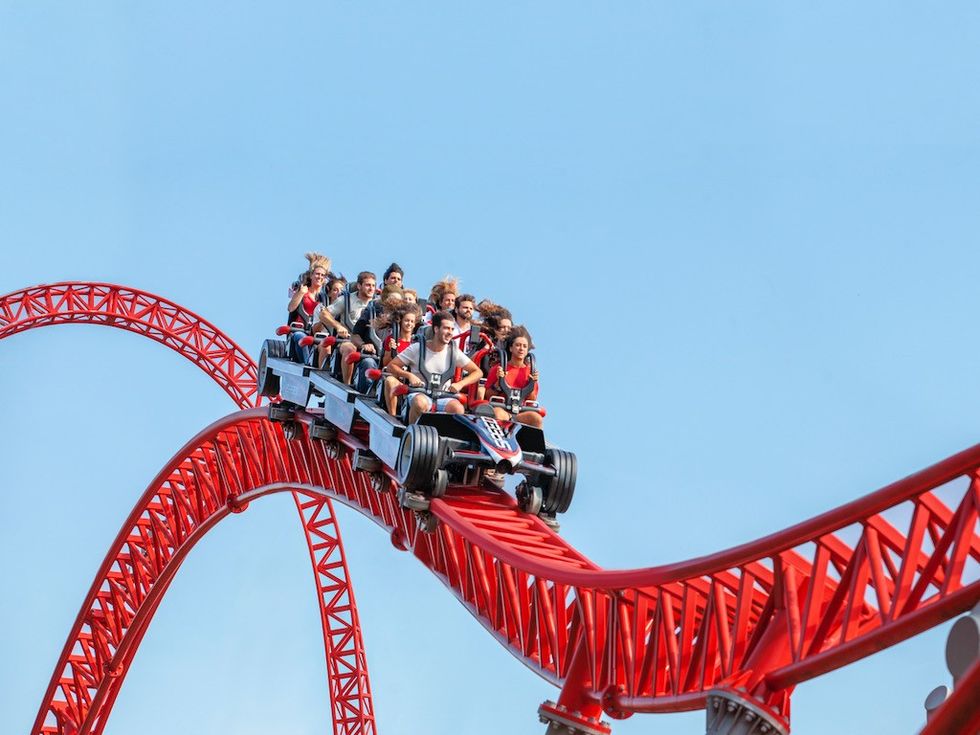 Mirabilandia's iSpeed coaster
Mirabilandia's iSpeed coaster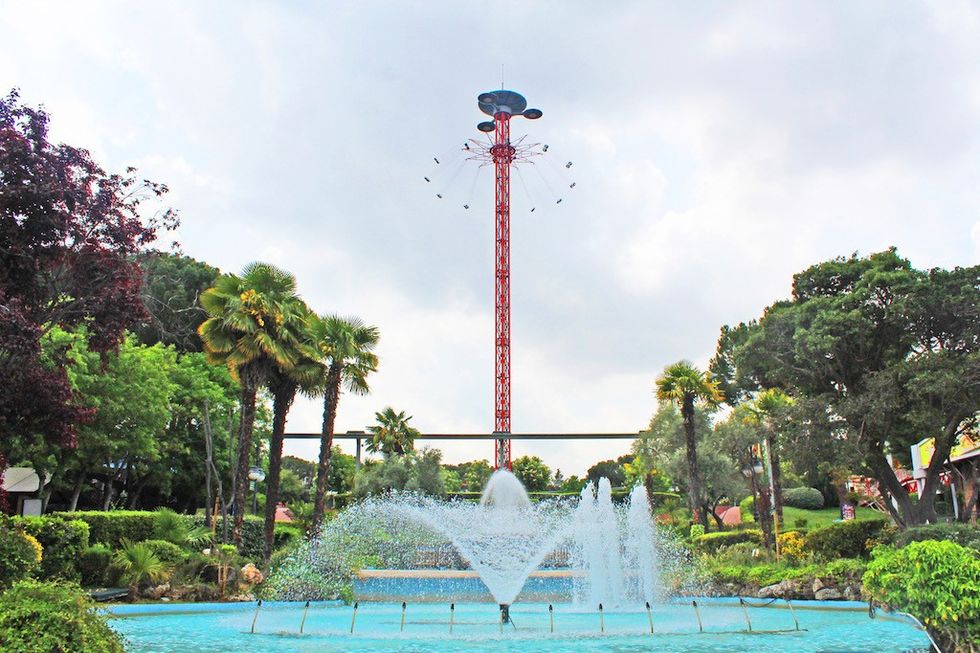 Parque de Atracciones de Madrid
Parque de Atracciones de Madrid Ferracci at the ribbon-cutting ceremony for Nickelodeon Land at Mirabilandia, with (left) Marie Marks, senior VP of global experiences for Paramount and (cutting the ribbon) Sabrina Mangina, GM at Mirabilandia
Ferracci at the ribbon-cutting ceremony for Nickelodeon Land at Mirabilandia, with (left) Marie Marks, senior VP of global experiences for Paramount and (cutting the ribbon) Sabrina Mangina, GM at Mirabilandia Tropical Islands OHANA hotel
Tropical Islands OHANA hotel Elephants at Blackpool Zoo
Elephants at Blackpool Zoo 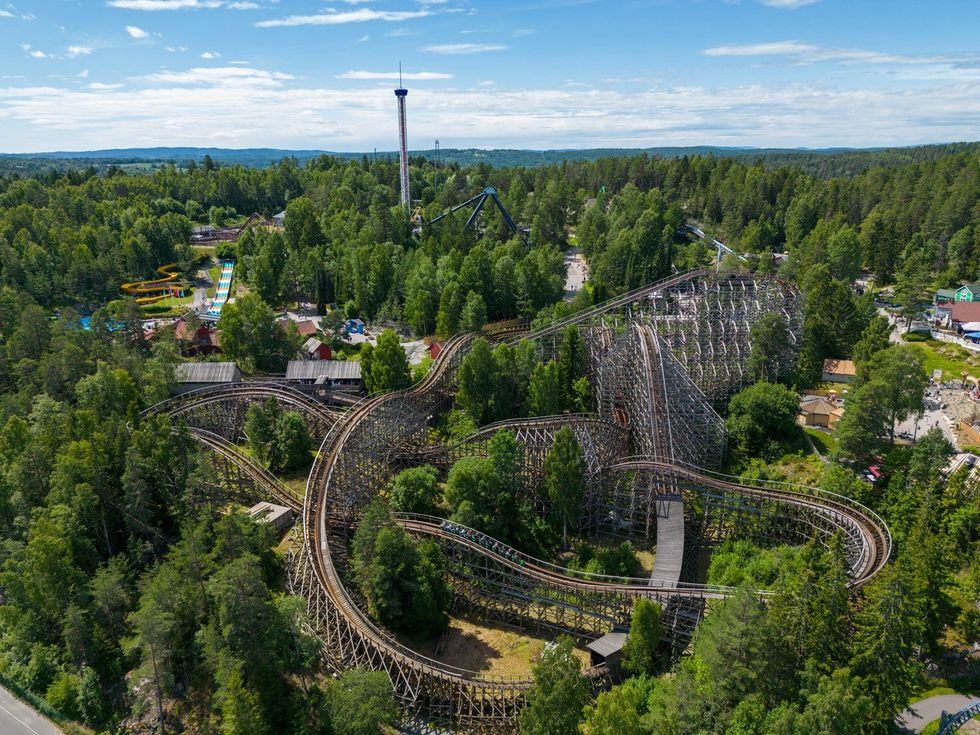 Tusenfryd
Tusenfryd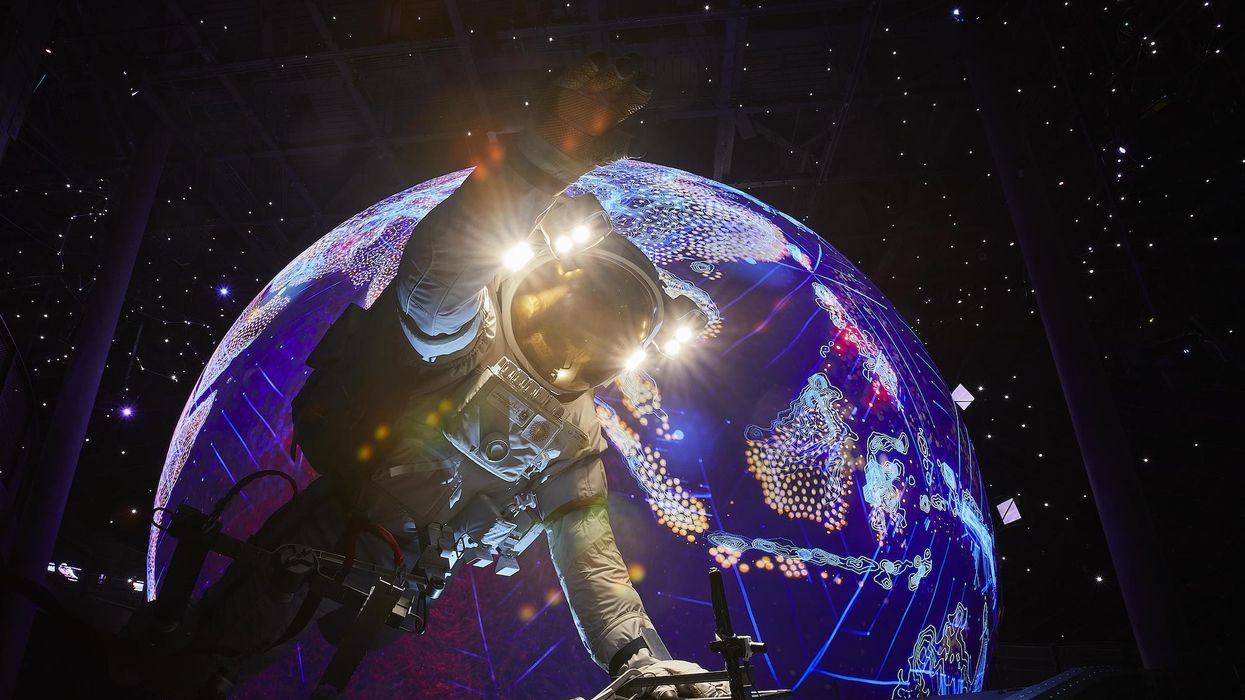
 Andrew Thomas, Jason Aldous and Rik Athorne
Andrew Thomas, Jason Aldous and Rik Athorne
